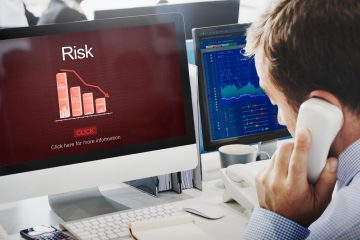How Top Companies Use Sustainability in Business

In recent years, sustainability has evolved from a buzzword to a fundamental pillar of business strategy. Today’s consumers, investors, and stakeholders are no longer satisfied with companies that merely talk about environmental responsibility; they want to see meaningful action. As climate change, resource depletion, and social equity issues continue to dominate the global conversation, businesses are increasingly aligning their strategies with sustainable practices. But sustainability in business is not just about reducing environmental footprints or adhering to regulations—it’s a powerful growth strategy that top companies are leveraging to drive innovation, strengthen brand loyalty, and future-proof their operations.
In this article, we will explore how some of the most successful companies in the world integrate sustainability into their business models and highlight the key practices that can help any organization build a sustainable future. By examining these examples, we can better understand the tangible benefits of sustainability and the roadmap for achieving it.
1. Sustainability as a Core Value: Building a Culture of Responsibility
The first step toward meaningful sustainability is ensuring that it is embedded in a company’s culture. Leading organizations treat sustainability not as a separate function or marketing strategy but as a core value that informs every decision. For instance, Patagonia, the outdoor apparel brand, has long positioned environmental responsibility as one of its key values. Patagonia not only focuses on using eco-friendly materials but also encourages its customers to buy less by promoting the concept of “worn wear,” where they buy back used garments to extend their lifecycle.
For many organizations, sustainability starts at the top. Senior leaders must demonstrate a genuine commitment to sustainability, which will cascade down through the entire organization. When sustainability is integrated into the company’s vision and day-to-day operations, it becomes a powerful driver of innovation and engagement. Companies like Unilever have been successful in building this kind of culture, where sustainability is embedded into their long-term strategy and operational practices, influencing everything from product development to supplier relationships.
2. Sustainable Product Design and Circular Economy Models
One of the most exciting developments in corporate sustainability is the rise of circular economy models. These models focus on reducing waste, reusing resources, and creating products that have a longer life cycle. Top companies are increasingly designing their products with end-of-life in mind, ensuring that they can be recycled or repurposed when they reach the end of their useful life.
IKEA, for example, has made significant strides in creating a circular economy model by focusing on designing products with reusable materials. The company has committed to making all of its products from renewable or recycled materials by 2030. This commitment includes transitioning its popular furniture line to using recycled plastics and wood fibers, reducing the environmental impact of its production processes.
Furthermore, Nike’s “Move to Zero” campaign represents the brand’s drive toward zero carbon and zero waste. Nike is transforming its supply chain by recycling old products into new ones, thus reducing the need for virgin materials. By designing products that can be regenerated or reused, Nike is not only reducing waste but also leading the way in sustainable innovation.
3. Green Supply Chain and Ethical Sourcing
A sustainable business does not just focus on its own operations; it also ensures that its entire supply chain is environmentally and socially responsible. Tesla provides an excellent example of this approach. The electric vehicle maker has committed to creating sustainable supply chains by sourcing materials such as lithium and cobalt from ethical suppliers. Tesla’s commitment to sustainability extends to its entire manufacturing process, ensuring that raw materials are sourced responsibly and used efficiently to minimize waste.
Similarly, Starbucks has made significant investments in ensuring that its coffee beans are ethically sourced through programs like C.A.F.E. Practices (Coffee and Farmer Equity Practices), which helps ensure that coffee farmers receive fair wages and that sustainable farming methods are used. By embedding sustainability into every tier of its supply chain, Starbucks not only supports environmental causes but also helps foster more resilient, ethically-run businesses across its network of suppliers.
Moreover, companies that embrace sustainable sourcing often create opportunities for local communities. The Body Shop is known for working with small-scale farmers and artisans from developing countries, ensuring that they receive fair trade prices for their goods. This approach benefits the local economy while contributing to more sustainable, transparent business practices.
4. Energy Efficiency and Renewable Energy
Another area where top companies are excelling is in energy management. As concerns over fossil fuels and greenhouse gas emissions grow, many organizations are looking to reduce their carbon footprints by investing in energy-efficient technologies and renewable energy sources.
Google is a prime example of a company that has made impressive strides in this area. Since 2017, the tech giant has been completely powered by renewable energy, sourcing electricity from solar and wind energy to run its data centers and office buildings. Google’s commitment to sustainability extends beyond its operations, as the company works to help other industries reduce their carbon footprints through its clean energy technologies.
Likewise, Microsoft has committed to becoming carbon-negative by 2030, going beyond neutral to actively reduce carbon emissions from its supply chain and operations. This includes removing more carbon from the environment than the company emits, with an emphasis on investing in renewable energy and carbon capture technology.
Energy efficiency also plays a critical role in corporate sustainability. Apple is another company leading the way in reducing its environmental impact by designing energy-efficient products and implementing energy-saving measures across its global operations. The company’s commitment to producing energy-efficient products not only reduces its carbon footprint but also helps consumers make more sustainable choices when buying electronics.
5. Social Sustainability: Fostering Inclusivity and Equity
Sustainability is not solely about environmental stewardship; it also encompasses social sustainability. Top companies understand that in order to create long-term value, they must foster inclusivity, equity, and fair working conditions within their organizations. This is particularly important as consumers and employees increasingly demand businesses take a stand on social issues, such as diversity, equity, and inclusion (DEI).
Salesforce is a prime example of a company that embraces social sustainability. The cloud software giant has made significant strides in promoting DEI within its workforce, implementing equal pay initiatives, and advocating for social justice. Salesforce has also worked to align its corporate values with social causes, such as environmental protection, education, and community health.
Another company focused on social sustainability is Ben & Jerry’s, the ice cream brand that has long been known for its commitment to social justice. Ben & Jerry’s integrates social causes into its business model, supporting campaigns on climate change, racial equity, and LGBTQ+ rights. This commitment to social issues strengthens its brand identity and builds deep loyalty among customers who share similar values.
6. Transparency and Reporting
Top companies also understand that sustainability is not just about taking action but also about communicating those actions transparently. Sustainability reporting has become a key part of business strategy for many corporations, as stakeholders increasingly demand transparency in how companies are addressing environmental and social issues.
Johnson & Johnson has long been a leader in sustainability reporting, publishing detailed annual sustainability reports that outline its goals, progress, and challenges. These reports cover everything from reducing carbon emissions to increasing diversity within the workforce. By providing transparency, companies like Johnson & Johnson build trust with investors, customers, and employees, showing that they are accountable for their sustainability commitments.
Ben & Jerry’s, in addition to its social activism, regularly publishes detailed reports about its sourcing practices, environmental impact, and community outreach initiatives. This level of transparency not only builds credibility but also inspires other companies to follow suit in prioritizing sustainability.
Conclusion
The integration of sustainability into business practices is not just an ethical choice; it’s a strategic one. Top companies like Patagonia, Tesla, Google, and Unilever have demonstrated that sustainability is a key driver of innovation, customer loyalty, and long-term profitability. By aligning business goals with environmental stewardship, ethical sourcing, renewable energy, and social justice, these companies are positioning themselves as leaders in a rapidly changing global marketplace.
For businesses looking to follow suit, the key takeaway is this: sustainability is not an add-on or a marketing gimmick, but a core business strategy. Whether through circular economy models, green supply chains, or energy-efficient technologies, organizations that prioritize sustainability are not just doing good—they are also doing well. As the world continues to confront climate change, resource scarcity, and social inequality, businesses that lead the way in sustainability will be the ones that thrive in the next era of corporate success.








